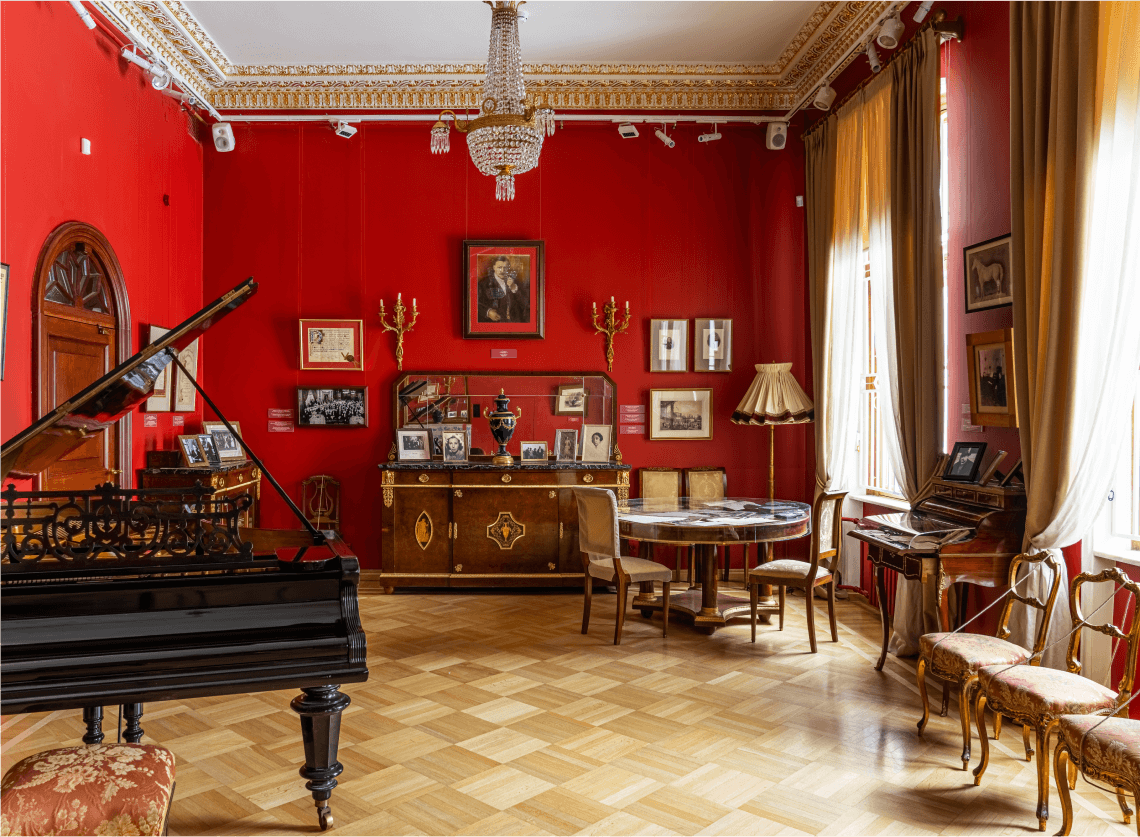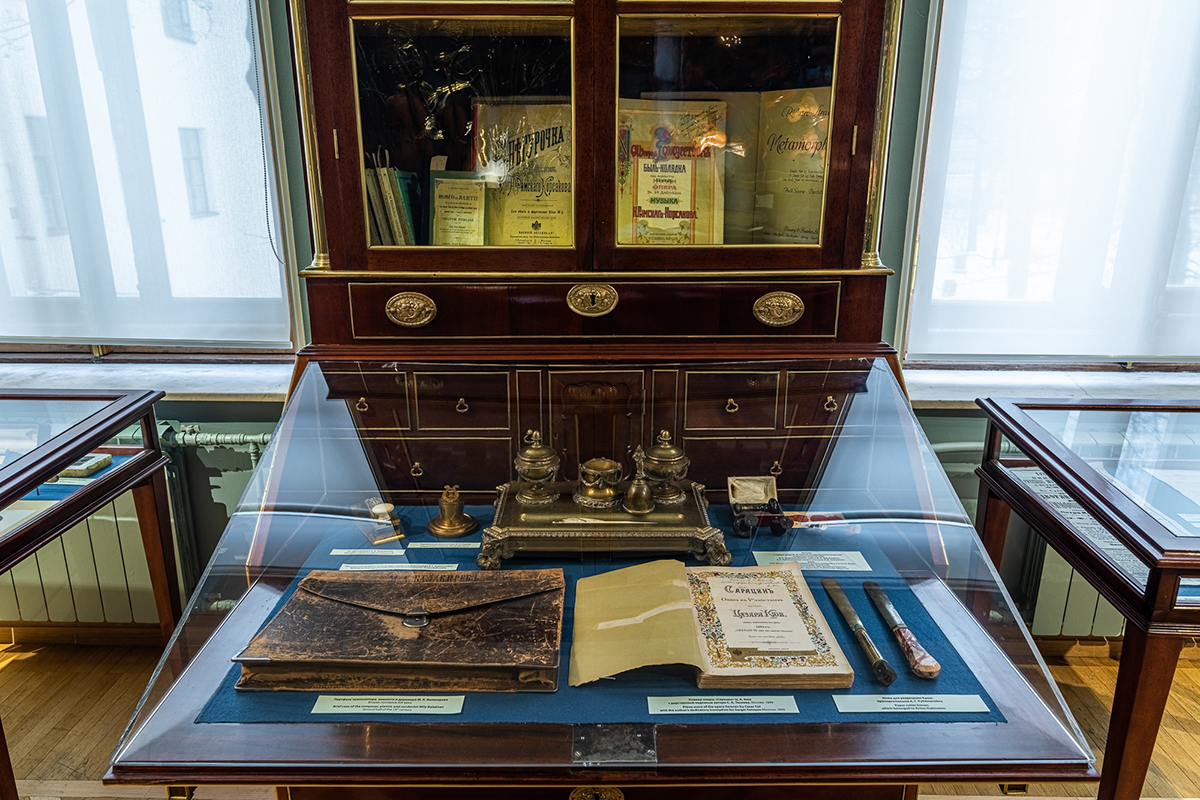Concept of the museum
R.S. Sadykhova
The Museum of Music is a branch of the St. Petersburg State Museum of Theater and Music. Its permanent exhibition is on display in the beautiful historic interiors of a 18th-century mansion that once belonged to the famous Sheremetev clan. New thematic sections are being added in the course of museum’s development: “Symphony Orchestra Instruments” in 2019, ", three new permanent exhibition halls in 2020, each with its own storyline: “Music Salon of Counts Sheremetev”,
“Ancient Greece as seen in the 19th century”, “Parisian Study of Alexander Glazunov”. The creative team of Museums and Exhibitions Manufactory was given a complex task to create the concept and implement the project of the renovated permanent exhibition. The main challenge was to install all the exhibition elements without ruining the context of historical interiors, where each piece of furniture and decoration is already a work of art and where the past reveals itself through original paintings and artefacts.
The space required a responsible attitude, having once hosted significant events of the 19th century musical scene. The list of great musicians who once performed at home concerts in the mansion includes names like Franz Lisz, Hector Berlioz and Mikhail Glinka as well as singers Pauline Viardot, Henriette Sontag and many other outstanding pianists and composers

The permanent exhibition is housed in the palace-like interiors, renovated in their glorious historical appearance. Some eminent architects of different time periods participated in the creation of the mansion and other manor buildings: F.S. Argunov, I.D. Starov, A.N. Voronikhin, G. Quarenghi, H. Meyer, D. Quadri, I.D. Corsini, N.L. Benois, A.K. Serebryakov and others. Belonging to the powerful Sheremetev family, the Fountain House hosted many high-society gatherings in St. Petersburg, becoming a meeting place for outstanding musicians, cultural and scientific figures. The Sheremetev choir chapel, created to accompany home church services in the Fountain House, was well-known not only in Russia, but also in Europe. In general, the opulent interiors and impressive pieces of decorative and applied art create a unique and special image of the museum

“The Symphony Orchestra” is one of the permanent exhibitions in the Sheremetev Palace. The central piece is a gigantic showcase presenting instruments that form a symphony orchestra, dating from the middle of the 18th to the middle of the 20th century. Antique violins and trumpets, wooden oboes from Mozart's time coexist with modern instruments. They are arranged in groups in the same way the orchestra members sit on the stage. You don't need a guide to learn more: a specially created audio-light program installed on a touchpad near the display case will illuminate the most interesting instruments that once played being conducted by Mozart, Beethoven, Berlioz, Wagner and Mahler. The multimedia helper will also tell all about the way the orchestras were organized at different times and provide complete information regarding each presented instrument, with photographs of important details and structural elements
Artistic and technical solutions

The main task of the artists was to create a unified exhibition ensemble, where all elements would form an interconnected system. The main requirement was to achieve overall harmony, consistency of all components, where they all fit and work together in accordance with the general plan. Using mutually reinforcing architectural, artistic, and technical means, the KMVI team designed a unique museum environment with a memorable image. Showcase equipment, multimedia tools that allow you to hear sounds of instruments, display units for artistic content are hidden from a visitor's eyes as much as possible, which allows to keep the historical ambience almost intact

The museum exhibition is rich in authentic artefacts. Manuscripts, photographs and personal belongings of outstanding musicians and composers are all carefully and yet naturally included in the historical interior. Material evidence of the past, telling stories of the work and glory of famous musicians, creates a special atmosphere for reflection and reminiscence
F. Boucher "Young Man and Nymph" (1730—1750)